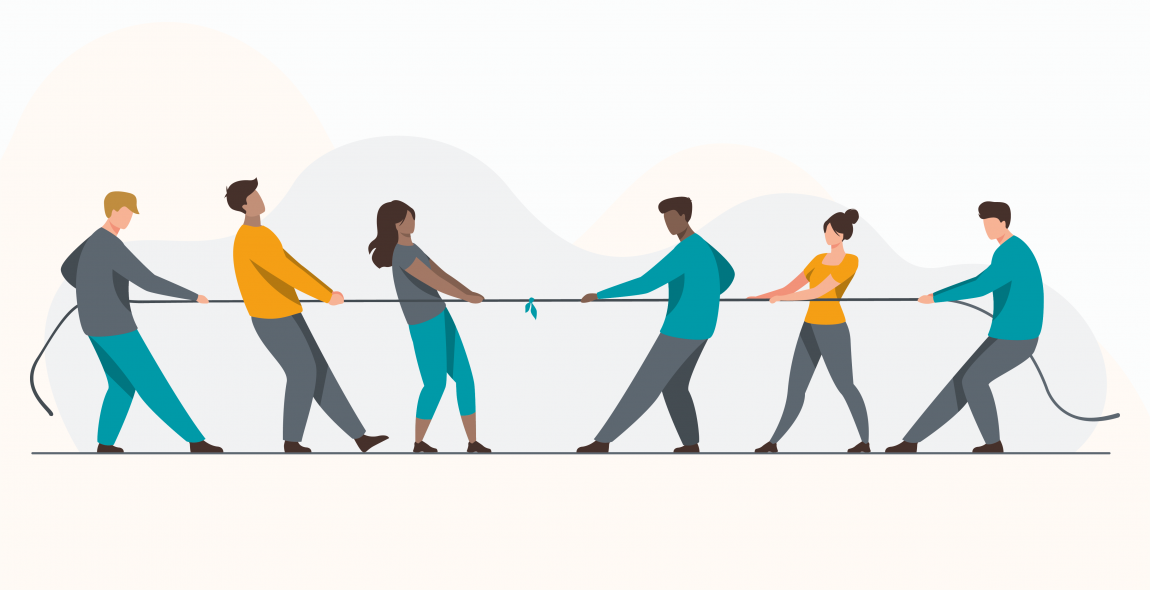Deep Read:
Innovating to survive and thrive in a post-COVID world
What will be the new normal?’ and ’how can we prepare for it?...... →
For general enquiries please contact us on
+44 1223 248888
enquiries2025@innoviatech.com
St Andrew's House, St Andrew's Road
Cambridge CB4 1DL United Kingdom
FIND US
Will the pandemic shrink the intention–behaviour gap?...
2nd September 2020
An unexpected consequence of the pandemic has been that people are thinking more about the environment. One survey found that 48% of people said the pandemic has made them more concerned about the environment and 55% said that, as a result of their COVID-19 experiences, they were more likely to purchase environmentally friendly products1. But intentions are all well and good. We know that people don’t always do what they say they do – there has always been an intention–behaviour gap when it comes to sustainability. Has the gap shrunk during the pandemic?
We see several opposing forces: some shrinking the gap and making pro-environmental behaviour more likely and some widening the gap and making pro-environmental behaviour less likely.

The intention–behaviour gap shrinks when people feel more connected to nature, form a ‘green identity’, and believe more strongly that they can make a difference. It widens when people don’t want to make sacrifices and have less disposable income, and when oil becomes cheaper and recycling harder.
Let’s consider the forces that shrink the gap. During the initial lockdown, the restrictions on movement meant that many people started cycling and walking more to manage their mental and physical health. 55% of people in the UK claim to have walked more since the lockdown than before2. Not only did people seek out nature more often, but due to prolonged confinement at home, people spent more time in their gardens, noticed the reduction in sound and air pollution and became more aware of their local wildlife. People became more aware of nature and felt more connected to it, irrespective of where they lived. There is reliable evidence that feeling connected to nature increases both intention and actual pro-environmental behaviour3-5, and it is clear that the pandemic has made people more aware of nature6.
Becoming more aware of nature may also contribute to another important factor that leads to pro-environmental behaviour – the formation of a green identity. Unsurprisingly, people who think of themselves as ‘ethical consumers’ are more inclined to buy products that they believe are sustainable6. There is evidence that spending more time in nature and intending to buy more environmentally friendly products are all consistent with the development of a green identity7. The stock shortages and queues at big supermarkets may also have supported this identity shift. These inconveniences caused many people to start shopping in local, independent stores, which meant they were shopping more responsibly. People who noticed this (and many did) started to form a ‘green identity’ – we have a natural urge to match our behaviours with our perceptions of ourselves. We’re seeing evidence that more people are developing a green identity – 33% of consumers strongly agree that they will re-evaluate the things they value most as a result of the pandemic, and more than a quarter say they are already thinking more about the impact of what they consume8.
If people believe that their own decisions have little effect on the environment, they are unlikely to act sustainably. One effect of the pandemic is that people have become aware that when we work together, we have the ability to make a difference. For example, after only a few weeks of lockdown, the waters in Venice were clear and the smog lifted in Hong Kong. This was a dramatic display of the effects of human behaviour on the environment. It made it abundantly clear that what we do has an impact, and that if we want to, we can make a difference. When people see the power of collective action, they interact differently with others and feel an increased sense of community. This cultural shift from “I” to “we” could have a permanent effect on sustainable behaviour, which is clearly a collective action problem.
On the other hand, there are factors that make pro-environmental behaviour more difficult. The likelihood of a prolonged and deep recession caused by the pandemic will lead to the loss of jobs and reduced incomes. Many people will not be willing to pay the perceived premium9 for eco-friendly products – they will not have the disposable income or they will lack the appetite to make a sacrifice. Already, consumers are being cautious with their expenditure. Globally, 54% of consumers claim that price is a more important purchasing criterion than before, even for consumers who claim to care about the environment10 – they feel they cannot afford to buy sustainable products even if they want to.
This unwillingness to pay for eco-friendly products will be exacerbated if there are cheaper alternatives. In May 2020, the price of oil dropped to an all-time low and, despite some rebound, will likely stay low throughout 2021. This may make oil-based products cheaper to produce and more attractive to buy. So, at a time when people have lower disposable incomes and can find cheaper alternatives, they may buy less-sustainable products – at least in the short term.
Another external factor concerns recycling. Consumers overwhelmingly believe that recycling is important. In a recent survey in the USA, 90% of people said that people should do what they can to try and recycle. Moreover, they recycle more when they believe that their recycled products are being transformed into new products11. But recycling is getting harder not easier. The recycling supply chain is mainly manual, highly globalized and uses a low-skilled workforce that is especially vulnerable to COVID-related illnesses. In the current environment, governments have not been easing recyclability regulations and it is difficult to pilot new packaging equipment. The result is that recycling capacity is not improving.
So, will the pandemic shrink the intention–behaviour gap for sustainability? The jury is out. As with so many other things, the pandemic has accelerated an existing trend and polarised responses. Psychologically, consumers may be more willing to be pro-environmental but systemic and structural issues may hinder their efforts. Some wealthy consumers may find it easier to act sustainably; some consumers may want to act sustainably but be unable to do so; and some consumers who do not consider sustainability may have their existing beliefs reinforced. It is clear that the pandemic has increased awareness of the environment but not everyone has the desire or ability to act to protect it. The intention–behaviour gap for sustainability may be with us for some time yet.
1. https://mag.euroshop.de/en/2020/04/covid-19-has-not-reduced-consumers-demands-for-sustainable-solutions/
2. https://www.statista.com/statistics/1114632/types-of-exercise-done-more-during-lockdown-in-great-britain/
3. Martin, L., White, M. P., Hunt, A., Richardson, M., Pahl, S., & Burt, J. (2020). Nature contact, nature connectedness and associations with health, wellbeing and pro-environmental behaviours. Journal of Environmental Psychology, 68, 101389.
4. Spendrup, S., Hunter, E., & Isgren, E. (2016). Exploring the relationship between nature sounds, connectedness to nature, mood and willingness to buy sustainable food: A retail field experiment. Appetite, 100, 133-141.
5. Abrahamse, W. (2019). Encouraging Pro-environmental Behaviour: What Works, what Doesn’t, and why. Academic Press.
6. Rousseau, S & Nick Deshcacht (2020) Public Awareness of Nature and the Environment During the COVID-19 Crisis, Environmental and Resource Economics, https://doi.org/10.1007/s10640-020-00445-w
7. Soron, D. (2010). Sustainability, self‐identity and the sociology of consumption. Sustainable development, 18(3), 172-181.
8. https://www.prnewswire.com/news-releases/four-consumer-behavior-trends-emerge-during-the-covid-19-pandemic-the-first-ey-future-consumer-index-finds-301045840.html
9. Popovic, Bart, Bossink, & Van der Sijde (2019) Factors influencing Consumer’ Decision to purchase food in environmentally friendly packaging: what do we know and where do we go from here, Sustainability, 11, 7917
10. https://www.ey.com/en_gl/consumer-products-retail/future-consumer-index–how-to-thrive-in-the-age-of-affordability
11. Winterich, Nenkov, & Gonzales (2019) Knowing What It Makes: How Product Transformation Salience Increases Recycling. Journal of Marketing,DOI:1177/0022242919842167

Charlotte has a background in psychology and behavioural science, and is specifically interested in environmental psychology: using psychology and behavioural science to help mitigate the profound impacts of human choice and social behaviour on the natural world. Oscar brings perspectives on how companies can overcome technical and commercial challenges to create sustainable products, and is interested in biomaterials, life-cycle assessments, and design for recyclability.